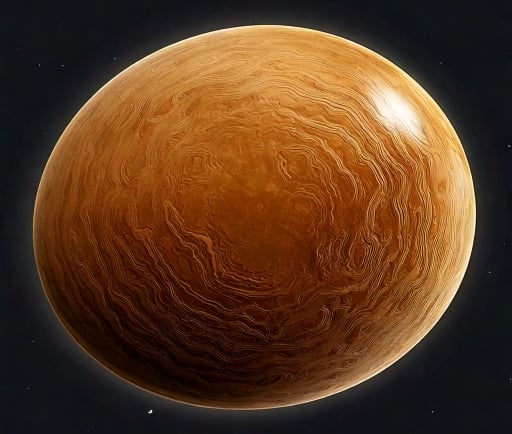Haumea: The Oval-Shaped Dwarf Planet


Introduction to Haumea
In the vast expanse of our solar system, many celestial bodies showcase unique features and characteristics. Among these, Haumea stands out not only for its oval shape but also for its remarkably rapid rotation. Discovered in 2004, Haumea is classified as a dwarf planet and is recognized for being one of the largest objects in the Kuiper Belt.
Physical Characteristics of Haumea
Haumea’s oval shape is a product of its swift rotation, which causes the planet to bulge at its equator. This rotation period is around 3.9 hours, making it one of the fastest rotating large objects in the solar system. This rapid spin contributes to its unique ellipsoidal shape, which contrasts with the more spherical appearances of other celestial bodies of similar sizes. Haumea's dimensions are approximately 1,632 kilometers in its longest axis, and about 1,070 kilometers in its shortest, demonstrating significant flattening typical of rapidly rotating bodies.
The Dwarf Planet's Unique Qualities
One of the most intriguing aspects of Haumea is its complex surface composition, which comprises primarily of water ice and various crystalline forms of ice, contributing to its glossy appearances. Additionally, Haumea possesses a ring system — a feature not typical of dwarf planets. This ring is believed to be formed from debris created by past collisions within its orbit. Furthermore, Haumea's two known moons, Hi’iaka and Namaka, further showcase the dynamism of this unique celestial body.
Haumea is also noteworthy for its potential for hosting information about the formation of the solar system. Understanding Haumea and its characteristics may hold keys to unveiling the processes that govern the evolution of other celestial bodies in similar regions. As researchers continue to observe and learn about Haumea, it stands as a compelling study subject for planetary science.
In summary, Haumea exemplifies the diversity present in our solar system. From its oval shape to its rapid rotation, this dwarf planet demonstrates characteristics that set it apart from its neighbors. As we advance our exploration of such celestial entities, Haumea remains a focal point due to its distinctive features and the mysteries that still surround it. The ongoing studies of its physical properties and orbital dynamics will undoubtedly enrich our understanding of the solar system's history and formation.
